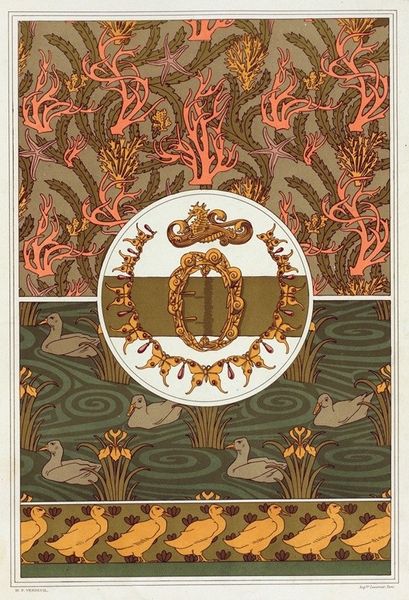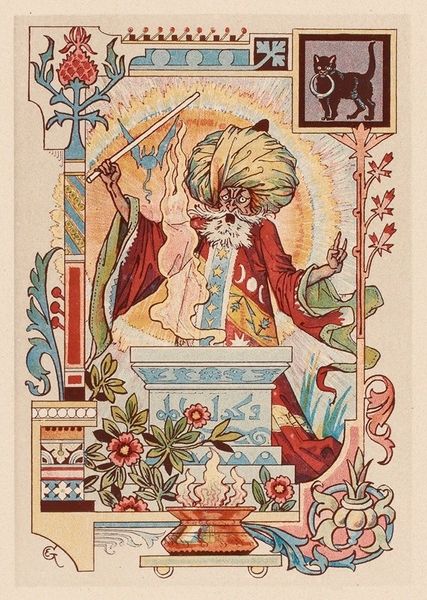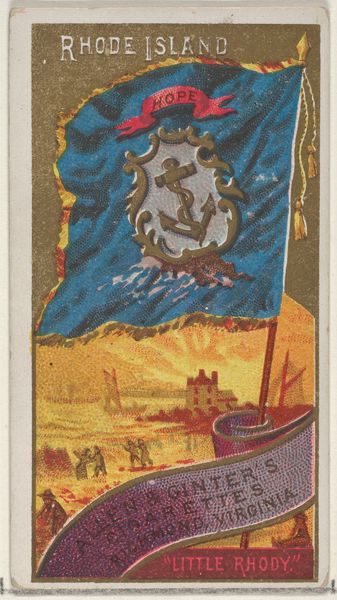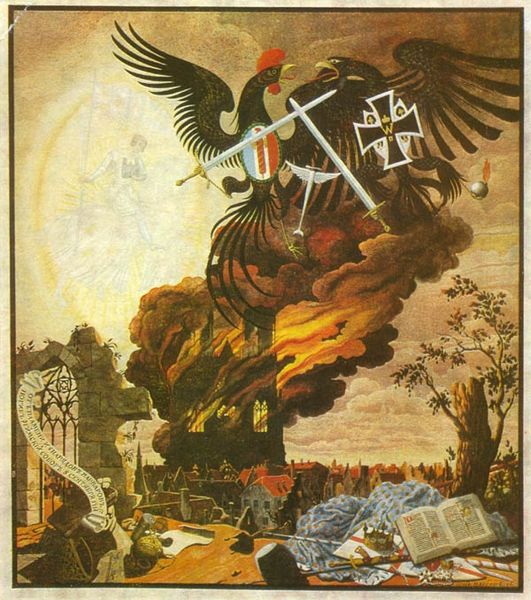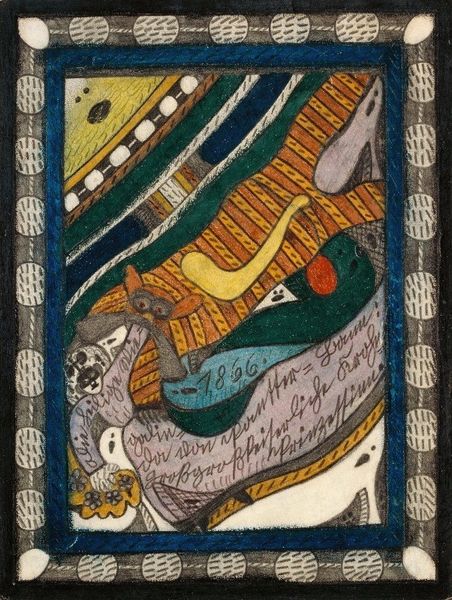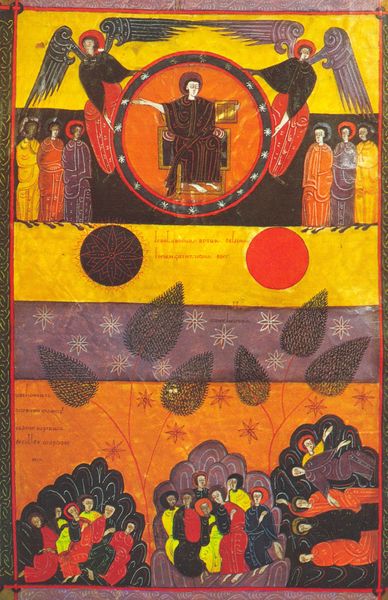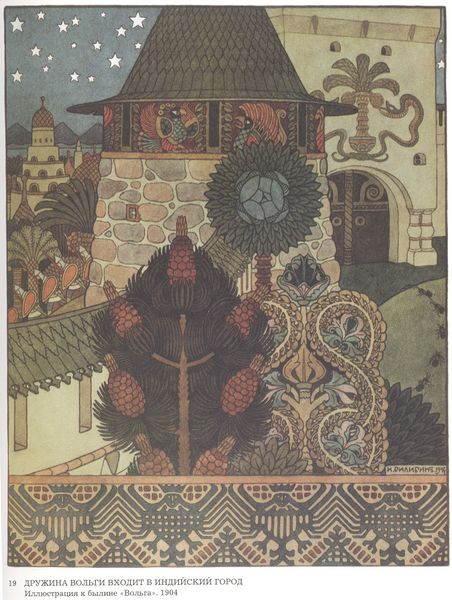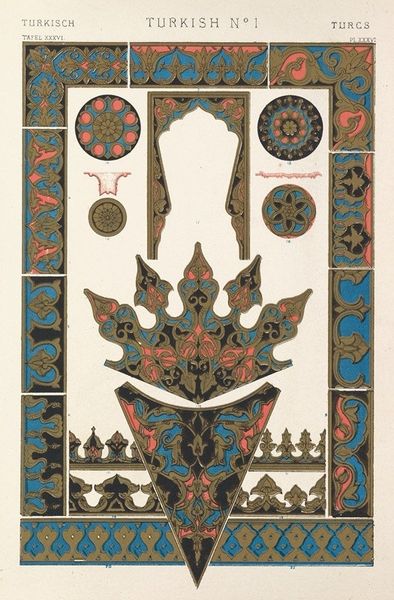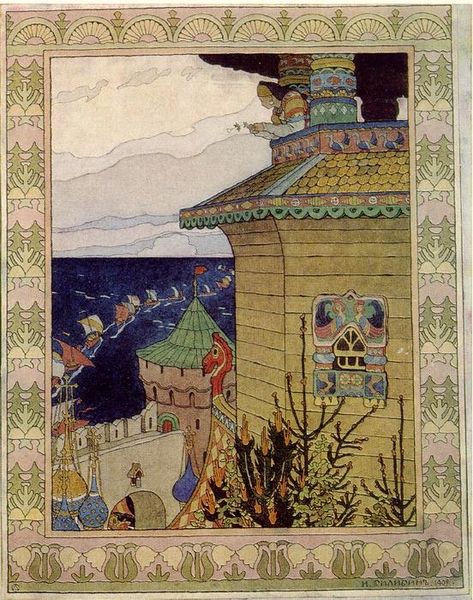
drawing, painting, print
#
drawing
#
art-nouveau
#
medieval
#
narrative-art
#
painting
# print
#
landscape
#
fantasy-art
#
figuration
#
decorative-art
Copyright: Public domain
Curator: Here we have Heorhiy Narbut’s 1909 “Illustration to ‘Wooden Eagle.’” It’s a mixed-media piece; a combination of drawing, painting and printmaking. What’s your initial take? Editor: Well, it immediately strikes me as… fantastically decorative! The composition feels almost theatrical, and there’s something enchanting in its bright palette of gold, red and greens that captures the viewer. Curator: The work very clearly draws on Art Nouveau aesthetics with that flattened perspective and emphasis on line. But I see something more interesting than simple stylistic choices here. The deliberate medievalism speaks to a fascination with Ukrainian cultural heritage and national identity formation at the time. Look at how Narbut is incorporating what is possibly the Kievan Rus' coat of arms. Editor: Good point. And, certainly, the subject—a figure riding a massive, stylized eagle over a somewhat fantasized landscape—it evokes classic folk tales, myths, perhaps even power dynamics? A female figure rides on the eagle - a striking assertion if we think about women being written out of History. What roles are given to the powerful versus the powerless here? Curator: Right, exactly! This was done at a pivotal moment, when Ukrainian intellectuals were actively reclaiming their past. Placing a figure on top of such a traditional powerful symbol like the eagle definitely brings a reinterpretation of power as opposed to more typical symbols associated with men. The deliberate harking back to that imagery creates this immediate connection to a distinct cultural narrative that attempts to reclaim agency and representation. Editor: I love how that reclamation plays out in a visual form. So, thinking about its role as an illustration… was it intended for a mass audience, thus attempting a certain collective cultural re-imaging? And the symbolic role the Sun is granted in the top corner of the frame to further create impact? Curator: Indeed! These were political times for Ukraine and its self-definition. Looking at Narbut, and artists from this period in general, through such prisms shows their conscious interventions. Editor: It shifts my perspective on the work considerably, recognizing that playful fantasy hides very specific sociopolitical ideas. Curator: Exactly, there is definitely complexity under its vibrant surface. Editor: Understanding these pieces with context gives them greater value as social imagery, truly remarkable.
Comments
No comments
Be the first to comment and join the conversation on the ultimate creative platform.
